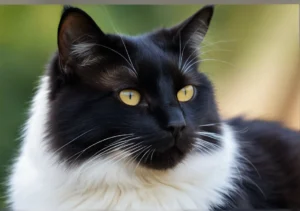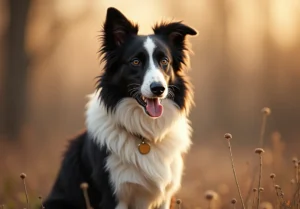Cats are known for their mysterious and fascinating behaviors, with one of the most intriguing features being their whiskers. Have you ever noticed that a cat’s whiskers can be different colors? Let’s uncover the reasons behind this unique phenomenon.
The Purpose of Whiskers
Whiskers, also known as vibrissae, serve as vital tools for a cat’s survival and navigation. These specialized hairs are incredibly sensitive, helping our feline friends sense changes in their environment and navigate obstacles with grace and precision. Imagine whiskers as a cat’s built-in radar system, allowing them to feel their way around in the dark or tight spaces.
Without their whiskers, cats may struggle to judge distances accurately and could become disoriented, affecting their ability to hunt or move safely. So, next time you admire your cat’s whiskers, remember that they are not just cute features but essential tools for their well-being and survival.
Genetic Factors
The color of a cat’s whiskers is not just a random occurrence but is determined by their genetic makeup. Just like how cats inherit their coat color from their parents, the color of their whiskers is also influenced by genes. This explains why some cats may have multicolored whiskers, showcasing a unique blend of genetic traits.
When it comes to calico cats, known for their striking patches of different colors, it’s not unusual to see them with whiskers that match their distinct coat patterns. This intriguing connection between coat color and whiskers adds another layer of genetic complexity to the fascinating world of cats.
Now you know that a cat’s whiskers are not just functional but also a reflection of their genetic heritage, making each feline friend truly unique in their appearance.
Coat Color Connection
Did you know that a cat’s whiskers can often be the same color as their coat? This isn’t a coincidence – it’s actually linked to their genetics. Cats with dark coats tend to have whiskers that are dark in color, while cats with lighter coats typically have lighter whiskers. This connection helps cats blend in with their surroundings and provides them with a natural camouflage. So, next time you see a cat with whiskers that match its coat, remember that it’s all in their genes!
Environmental Influences
The color of a cat’s whiskers can also be influenced by environmental factors. Exposure to sunlight can sometimes lighten a cat’s whiskers, just like how it can lighten human hair. Additionally, a cat’s diet can play a role in the color of their whiskers. A balanced diet rich in nutrients can help maintain the vibrancy of a cat’s whiskers, while deficiencies can sometimes lead to changes in color. So, make sure your feline friend is getting the right nutrition for healthy and colorful whiskers.
- Tip: Regular grooming can also help keep your cat’s whiskers in top condition. Brushing your cat gently can help remove dirt and debris that may affect the color of their whiskers.
Health Indicators
Have you ever noticed that a cat’s whiskers can come in different colors? That’s not just for looks – the color of a cat’s whiskers can actually be a health indicator. Healthy cats tend to have consistent whisker color that matches their fur. If you notice a sudden change in your cat’s whisker color, it could be a sign that something is off. Pale or discolored whiskers may indicate a nutritional deficiency or poor health. On the other hand, bright and vibrant whiskers could be a sign of good health. Keep an eye on your cat’s whisker color as part of their overall well-being assessment, and consult your vet if you notice any significant changes.
Specific Breeds
Did you know that certain cat breeds exhibit unique variations in whisker color more frequently than others? Siamese cats, known for their striking blue eyes and sleek bodies, often have white whiskers that stand out against their dark fur. Similarly, Calico cats, with their patchwork coats, may sport multi-colored whiskers that match their one-of-a-kind patterns. Maine Coon cats, famous for their large size and fluffy tails, can have black whiskers that complement their majestic appearance. These breed-specific whisker colors add to the charm and allure of each cat breed, making them even more unique and special. Next time you come across a cat with distinct whisker colors, take a moment to appreciate the beauty and individuality of these incredible felines.
Age and Development
Cats are like little chameleons when it comes to their whiskers changing colors as they age. Kittens usually start with white whiskers that gradually darken as they grow older. This color transformation is due to the melanin pigment in their hair follicles. So, if you notice your cat’s whiskers getting darker, it’s just a natural part of their development. Just like kids growing out of their baby teeth, cats grow into their whisker colors too!
Fun Facts
Did you know that a cat’s whiskers are not just there for show? These vibrissae (fancy word for whiskers) are actually specialized sensory hairs that help cats navigate and explore their surroundings. Their whiskers are so sensitive that they can even detect subtle changes in the air currents around them, giving them a superpower-like ability to sense objects and movements in the dark. So next time your cat seems to know exactly where to pounce, you can thank those amazing whiskers of theirs!
Another fun fact about cat whiskers is that they’re usually as wide as their body. Yes, you heard that right! Cats use this whisker span to gauge whether they can fit through tight spaces without getting stuck. They’re like built-in measuring tools! So next time you see your cat squeezing through a door or peeking into a small space, remember it’s all thanks to those handy whiskers of theirs.
Bonus Tip: Never trim or cut your cat’s whiskers! It may seem like a harmless grooming practice, but whiskers are vital for your cat’s spatial awareness and balance. Just like you wouldn’t want to lose sight of your GPS on a road trip, your cat needs their whiskers to navigate their world confidently. So, let those whiskers be their trusty guide!
Alex, a passionate animal lover, has experience in training and understanding animal behavior. As a proud pet parent to two dogs and three cats, he founded AnimalReport.net to share insights from animal experts and expand his knowledge of the animal kingdom.




